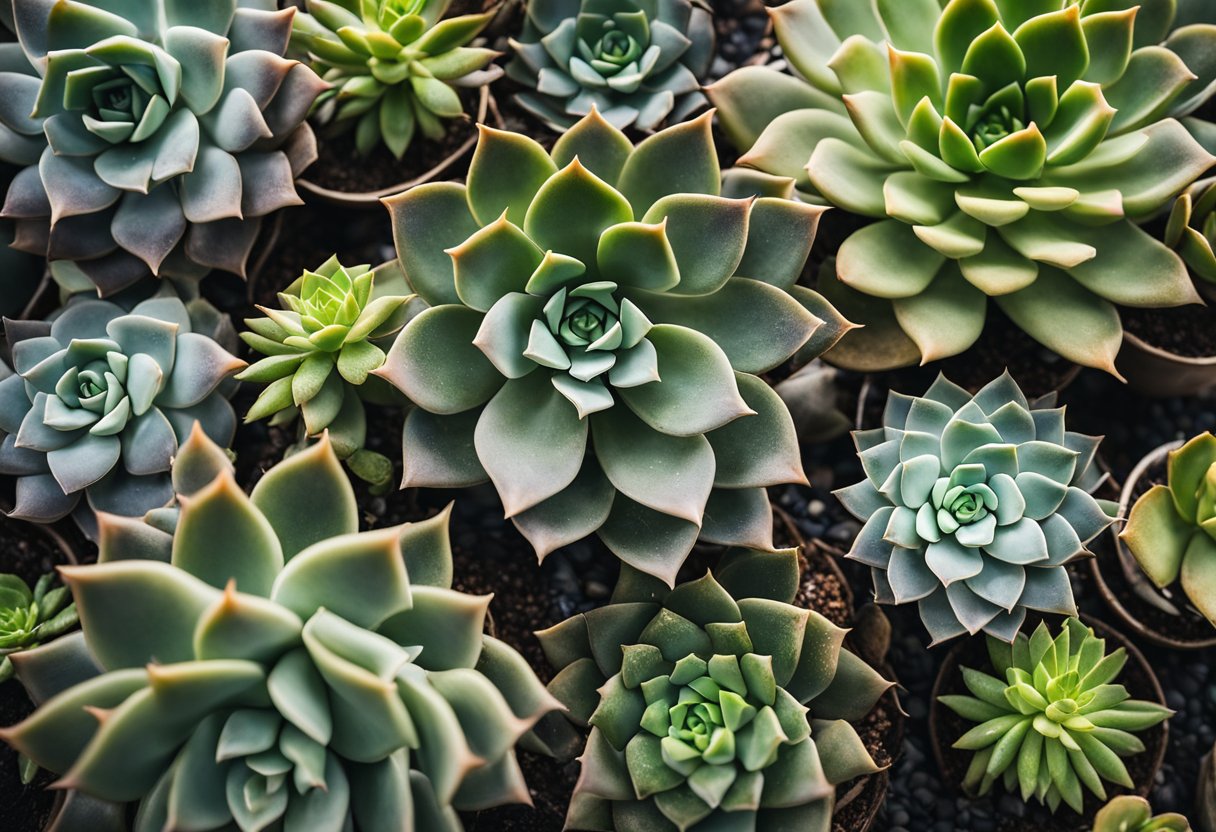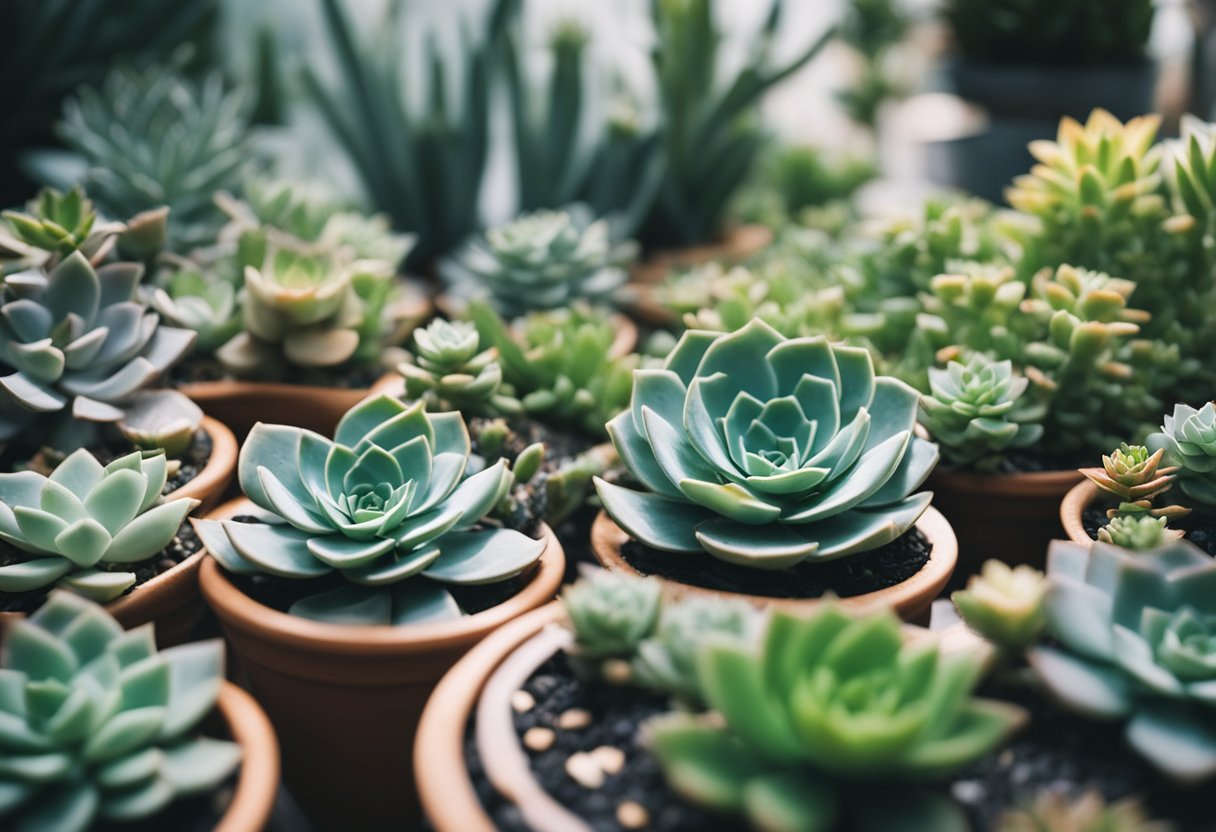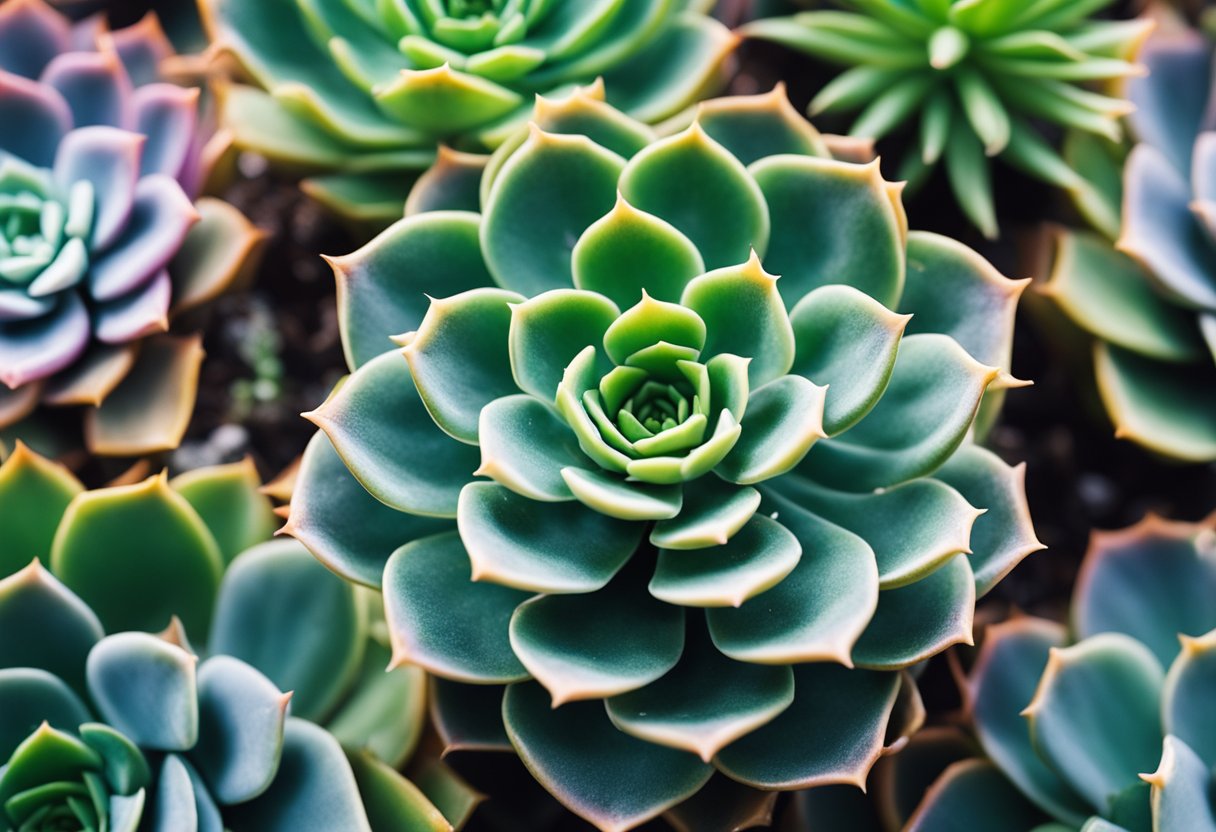Benefits of Succulents: A Guide to Their Health and Environmental Advantages
Succulents are a popular choice of indoor and outdoor plants due to their unique appearance and low maintenance requirements. These plants are known for their thick, fleshy leaves and ability to store water, which allows them to survive in hot and dry environments. However, succulents offer more than just aesthetic appeal and convenience. They also provide several benefits that can positively impact one’s health and well-being.
This post may contain affiliate links, which means I’ll receive a commission if you purchase through my link, at no extra cost to you. Please read full disclosure here.

One of the most significant benefits of succulents is their ability to purify the air. Like other plants, succulents absorb carbon dioxide and release oxygen through photosynthesis. However, they also absorb toxins and pollutants present in the air, such as formaldehyde and benzene, which can be harmful to human health. By placing succulents in the home or office, individuals can improve the air quality and reduce the risk of respiratory problems.
In addition to air purification, succulents have been found to have medicinal properties. Many species of succulents, such as aloe vera, have been used for centuries to treat various ailments, including cuts, burns, and stomachaches. The juice and gel extracted from aloe vera plants have anti-inflammatory and antioxidant properties, making them a popular ingredient in skincare and beauty products. By incorporating succulents into their daily lives, individuals can benefit from their natural healing properties.
Understanding Succulents

Succulents are a type of plant that store water in their leaves, stems, and roots. They come in a variety of shapes and colors, making them a popular choice for indoor and outdoor gardens. Succulents are native to arid and semi-arid regions of the world, such as deserts and steppes.
One of the defining features of succulents is their ability to survive in harsh environments with little water. They have evolved to store water in their leaves, stems, and roots, which allows them to survive for long periods of time without rainfall. This adaptation makes them a great choice for those who want to add some greenery to their home or garden but don’t have the time or resources to care for plants that require frequent watering.
Succulents come in a wide variety of shapes and colors, from the spiky leaves of the agave plant to the round, fleshy leaves of the jade plant. Some succulents have brightly colored flowers, while others are prized for their unique shapes and textures.
Succulents have a long history, with evidence of their use dating back to ancient times. Some cultures believed that succulents had healing powers, while others used them for food and drink. Today, succulents are still used for a variety of purposes, from landscaping to home decor.
Overall, succulents are a fascinating and versatile type of plant that can add a touch of nature to any space. Their unique shapes, colors, and adaptations make them a popular choice for those looking to add some greenery to their home or garden.
Health Benefits of Succulents

Succulents are not only beautiful and low-maintenance, but they also offer several health benefits. In this section, we will discuss three major categories of health benefits of succulents: air quality improvement, mental health boost, and physical health benefits.
Air Quality Improvement
Succulents are known for their ability to improve air quality. They release oxygen and absorb carbon dioxide, which helps to keep the air fresh and pure. Some succulents like the snake plant and aloe vera release oxygen at night, making them perfect for the bedroom. They can also remove toxins like benzene and formaldehyde from the air, making it healthier to breathe.
Mental Health Boost
Succulents can also have a positive impact on mental health. Studies have shown that being around plants can reduce stress, improve focus and attention, and increase productivity and concentration. Succulents can also promote relaxation and happiness, making them perfect for the workplace or home.
Physical Health Benefits
Succulents can offer several physical health benefits. Aloe vera, for example, has anti-inflammatory and medicinal properties that can help soothe a sore throat and dry, itchy skin. Edible succulents like sea beans are rich in vitamins, potassium, calcium, and antioxidants, making them a healthy addition to any diet. Succulents can also help regulate humidity levels in the air, which can be beneficial for those with high blood pressure or a dry cough. Some succulents like aloe vera and snake plant can also help reduce joint pain and arthritis symptoms.
In conclusion, succulents are not just pretty plants, but they also offer several health benefits. From improving air quality to boosting mental and physical health, succulents are a great addition to any home or office.
Easy Care and Maintenance
Succulents are known for being low maintenance and easy to care for, making them perfect for both experienced and novice gardeners alike. In this section, we will discuss the basics of caring for indoor succulents, including their watering and soil requirements, light and climate needs, and propagation techniques.
Watering and Soil Requirements
One of the most important aspects of succulent care is proper watering and soil drainage. Succulents are native to arid environments, so they are adapted to survive in dry conditions. Overwatering can be detrimental to their health, so it’s important to let the soil dry out completely before watering again. A well-draining soil mix is also essential to prevent root rot. A mixture of sand, perlite, and potting soil can provide the right balance of moisture retention and drainage.
Light and Climate Needs
Succulents thrive in bright, indirect sunlight. They need at least six hours of sunlight a day to grow and stay healthy. However, direct sunlight can be too harsh and cause sunburn or scorching. If your succulent is getting too much direct sunlight, move it to a slightly shadier location. Succulents also prefer warm temperatures and can be sensitive to cold drafts, so keep them away from air conditioning vents or windows during the winter months.
Propagation Techniques
One of the great things about succulents is that they are easy to propagate. Stem cuttings, leaf cuttings, and offsets can all be used to create new plants. Stem cuttings should be allowed to dry out and callus over for a few days before being planted in well-draining soil. Leaf cuttings can be placed directly on top of the soil and lightly misted until they start to grow roots. Offsets, or baby plants that grow from the base of the parent plant, can be gently removed and planted in their own pot.
In summary, succulents are low maintenance plants that are easy to care for. Proper watering and soil drainage, as well as adequate light and climate conditions, are essential for their health. Propagation techniques such as stem cuttings, leaf cuttings, and offsets can be used to create new plants.
Popular Types of Succulents
Succulents are popular plants that come in a wide variety of shapes, sizes, and colors. They are easy to care for and thrive both indoors and outdoors. Here are some popular types of succulents that you can consider for your garden or home:
Indoor Succulents
Indoor succulents are perfect for those who want to bring some green into their homes. They are easy to care for and can thrive in low light conditions. Some popular indoor succulents include:
- Aloe Vera: Aloe Vera is a popular indoor succulent that has healing properties. It is easy to care for and can thrive in bright, indirect light.
- Jade Plant: The Jade Plant is a slow-growing indoor succulent that can live for many years. It has shiny oval or rounded leaves, which act as reservoirs for water so it only needs to be watered every 2 weeks.
- Panda Plant: The Panda Plant is a fuzzy indoor succulent that has soft, furry leaves. It can thrive in low light conditions and is perfect for those who want a low-maintenance plant.
Outdoor Succulents
Outdoor succulents are perfect for those who want to add some green to their garden. They are easy to care for and can thrive in a variety of conditions. Some popular outdoor succulents include:
- Agave: Agave is a popular outdoor succulent that comes in many different varieties. It is drought-tolerant and can thrive in hot, dry conditions.
- Saguaro: The Saguaro is a large outdoor succulent that is native to the Sonoran Desert. It can grow up to 50 feet tall and can live for many years.
- Opuntia: Opuntia, also known as the Prickly Pear Cactus, is a popular outdoor succulent that is known for its edible fruit. It can thrive in hot, dry conditions and is perfect for those who want a low-maintenance plant.
Edible Succulents
Edible succulents are perfect for those who want to add some flavor to their meals. They are easy to grow and can be used in a variety of dishes. Some popular edible succulents include:
- Sea Beans: Sea Beans are a type of succulent that grows along the coast. They are edible and can be used in salads, stir-fries, and more.
- Kalanchoe: Kalanchoe is a popular edible succulent that is known for its sweet and sour flavor. It can be used in salads, smoothies, and more.
- Yucca Plant: The Yucca Plant is a popular edible succulent that is known for its starchy root. It can be used in a variety of dishes, including soups and stews.
Creative Uses of Succulents
Succulents are not only easy to care for, but they also offer a wide range of creative uses. Here are a few ideas to get you started:
Succulents as Gifts
Succulents make great gifts for any occasion. They are unique, affordable, and long-lasting. You can find them in a variety of containers, from traditional pots to teacups, mason jars, and even books. They come in different shapes, sizes, and colors, making them a versatile gift option. You can also create your own succulent arrangement by mixing and matching different types of succulents in a single container.
Decorative Applications
Succulents are also great for decorative applications. You can use them to create wreaths, terrariums, and centerpieces. They are also perfect for adding a touch of greenery to any room in your home. You can place them on shelves, windowsills, and even hang them on walls. Succulents are a trendy addition to any home décor and can add a unique touch to your living space.
Overall, succulents are a winner when it comes to creative uses. They are easy to care for, affordable, and come in a variety of shapes and sizes. Whether you are looking for unique gifts or decorative applications, succulents are a great option.